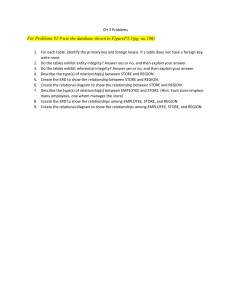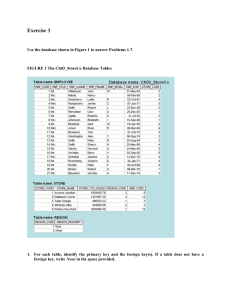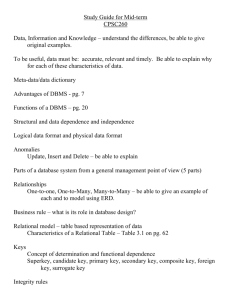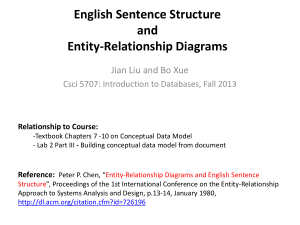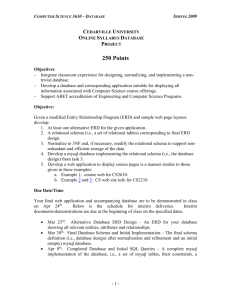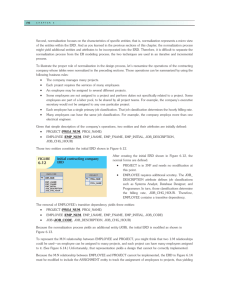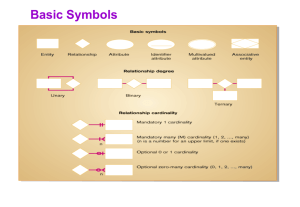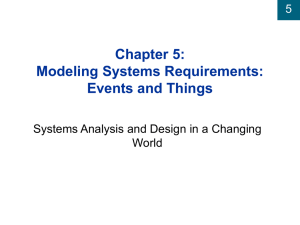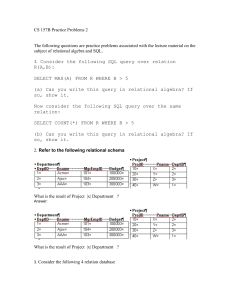View Additional Files
advertisement
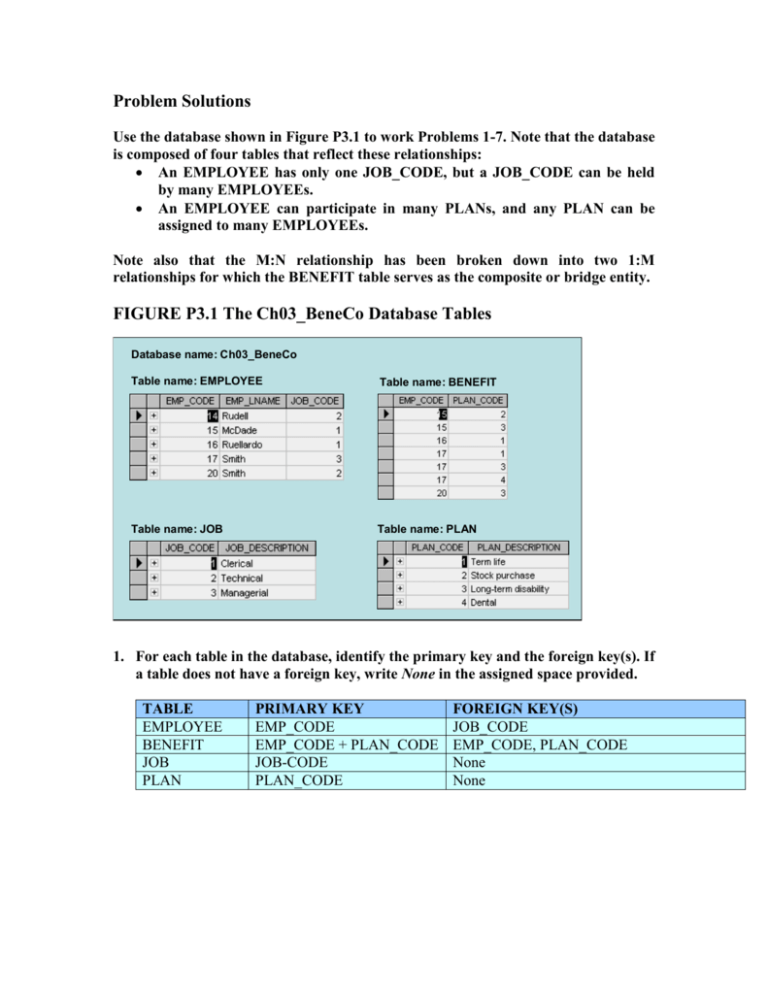
Problem Solutions Use the database shown in Figure P3.1 to work Problems 1-7. Note that the database is composed of four tables that reflect these relationships: An EMPLOYEE has only one JOB_CODE, but a JOB_CODE can be held by many EMPLOYEEs. An EMPLOYEE can participate in many PLANs, and any PLAN can be assigned to many EMPLOYEEs. Note also that the M:N relationship has been broken down into two 1:M relationships for which the BENEFIT table serves as the composite or bridge entity. FIGURE P3.1 The Ch03_BeneCo Database Tables Database name: Ch03_BeneCo Table name: EMPLOYEE Table name: BENEFIT Table name: JOB Table name: PLAN 1. For each table in the database, identify the primary key and the foreign key(s). If a table does not have a foreign key, write None in the assigned space provided. TABLE EMPLOYEE BENEFIT JOB PLAN PRIMARY KEY EMP_CODE EMP_CODE + PLAN_CODE JOB-CODE PLAN_CODE FOREIGN KEY(S) JOB_CODE EMP_CODE, PLAN_CODE None None 2. Create the ERD to show the relationship between EMPLOYEE and JOB. The ERD is shown in Figure P3.2. Note that the JOB_CODE = 1 occurs twice in the EMPLOYEE table, as does the JOB_CODE = 2, thus providing evidence that a JOB can be assigned to many EMPLOYEEs. But each EMPLOYEE has only one JOB_CODE, so there exists a 1:M relationship between JOB and EMPLOYEE. Figure P3.2 The ERD for the EMPLOYEE-JOB Relationship 3. Create the relational diagram to show the relationship between EMPLOYEE and JOB. The relational schema is shown in Figure P3.3. Figure P3.3 The Relational Diagram 4. Do the tables exhibit entity integrity? Answer yes or no; then explain your answer. TABLE EMPLOYEE ENTITY INTEGRITY Yes BENEFIT Yes JOB Yes PLAN Yes EXPLANATION Each EMP_CODE value is unique and there are no nulls. Each combination of EMP_CODE and PLAN_CODE values is unique and there are no nulls. Each JOB_CODE value is unique and there are no nulls. Each PLAN_CODE value is unique and there are no nulls. 5. Do the tables exhibit referential integrity? Answer yes or no; then explain your answer. Write NA (Not Applicable) if the table does not have a foreign key. TABLE EMPLOYEE REFERENTIAL INTEGRITY Yes BENEFIT Yes JOB PLAN NA NA EXPLANATION Each JOB_CODE value in EMPLOYEE points to an existing JOB_CODE value in JOB. Each EMP_CODE value in BENEFIT points to an existing EMP_CODE value in EMPLOYEE and each PLAN_CODE value in BENEFIT points to an existing PLAN_CODE value in PLAN. 6. Create the ERD to show the relationships among EMPLOYEE, BENEFIT, JOB, and PLAN. The Crow’s Foot ERD is shown in Figure P3.6. Figure P3.6 The Crow’s Foot ERD 7. Create the relational diagram to show the relationships among EMPLOYEE, BENEFIT, JOB, and PLAN. The relational diagram is shown in Figure P3.7. Note that the location of the entities is immaterial – the relationships move with the entities. Figure P3.7 The Relational Diagram
